Star Trek: Lower Decks is heading into its third week on the air, and as the episodes continue to roll out, we caught up with series creator and showrunner Mike McMahan to talk about the show’s animated art style, why the TNG era is such a draw for storytelling, and how his team uses existing Trek canon to form the Lower Decks world.
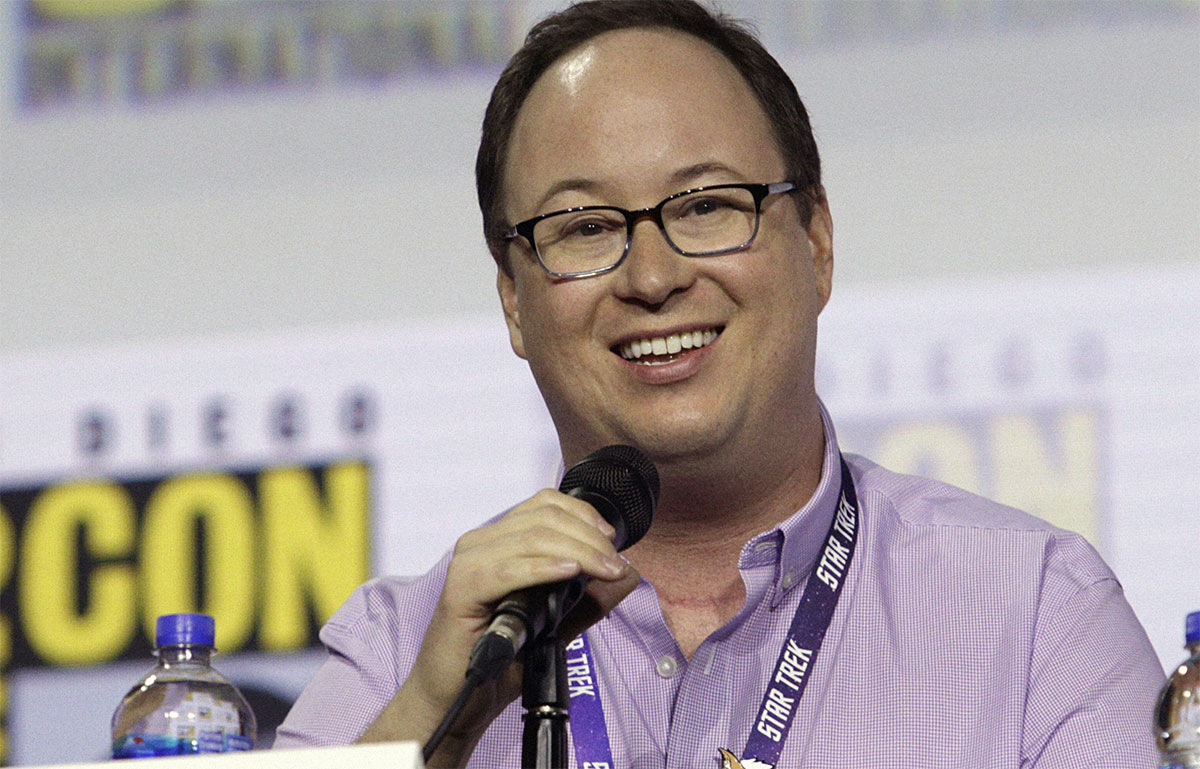
TREKCORE: You’ve talked about your inspiration for the show, and how you pitched it to the team at Secret Hideout – but how did you land on the look of the show, the character design, and the overall animation style for Lower Decks?
MIKE MCMAHAN: I grew up watching The Simpsons and Futurama, and Family Guy a little bit later, and King of the Hill – and from, from my time working in animation, I’ve worked in and around a lot of what people would call primetime animated comedy.
That’s the stuff you see around the 7:00 PM block on Fox, and other places too, you know, the ‘animation domination’ style; that’s what I grew up with. I was a [production assistant] on South Park, I was a P.A. on Drawn Together, and a writers’ assistant and eventually showrunner on Rick & Morty – so that, combined with really loving the feeling that I get from watching Simpsons and Futurama…
Like, those shows really land for me in a way that are really comforting. So when we sitting down with the artists at Titmouse Animation — whose art team makes the show in their studio in Vancouver – my edict for what the show should look like were really coming from a place of where I wanted a combination of things to work.
Because we were animated, because we’re a comedy, I wanted the character designs to really have the prime-time animated comedy vibe. All of the characters seem like, from a distance, when you sit down to watch the show, it’s probably not going to be an action kids show. And on top of that, I really wanted the backgrounds, the ship design, and all of the stuff behind the characters to be an elevated version of what you might see in a prime-time animated comedy.
So traditionally, you have very few backgrounds, you have very few incidentals, and you don’t spend a bunch of time making sure that everything in the background is looking gorgeous and crazy and awesome — but on Lower Decks, you know, it’s the opposite of that. I wanted a lot of detailed backgrounds, I wanted a lot of references to The Next Generation for the prime-time animated-looking characters to inhabit.
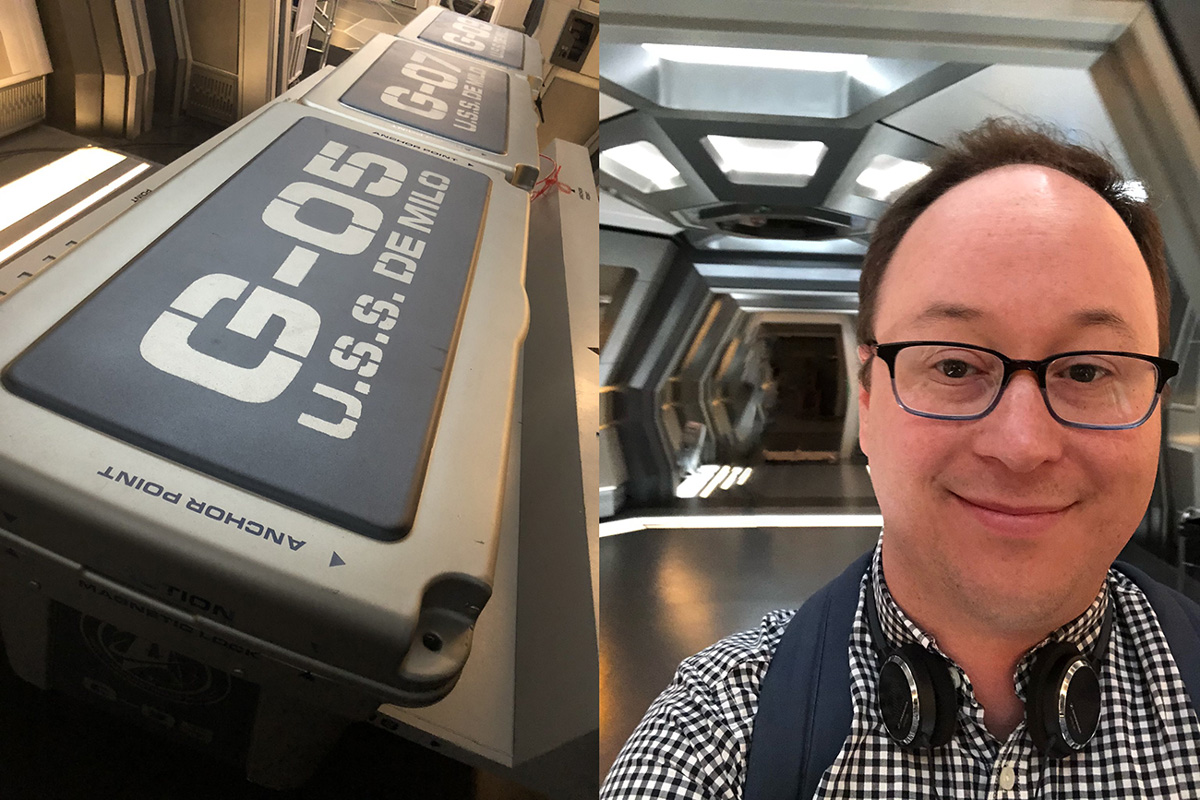
Now, alongside all of that, I explained this a lot to our art team, the prime-time look of the characters — those designs — they feel very human to me, even when they’re not human. We have voice actors on our show, but you’re not seeing an actor inhabiting an actual space… and I wanted the design of the characters to reflect a feeling of, you know, these are people. These are human beings and these are aliens that are inhabiting these sci-fi areas.
It went hand in hand with the feeling of the grounded sort of every-man vibe of The Simpsons in a way. At least, that’s what we were trying for.
TREKCORE: When you start talking about Star Trek, there’s nothing people pay more attention to than the details: especially in prop design, costume design, alien and set designs.
How do you take these familiar elements, that are so well known in the physical world, and translate them into this animated world?
MCMAHAN: Well, many of the people on the show – and many of the artists on the show — are Star Trek fans, and we have a lot of people who are in charge of making sure that if you write a scene where technology is being used, we then dive into the existing Star Trek lore and imagery.
I mean, there are so many reference guides — not only physical, but also online — you know, the fan reference guides, the various kind of wikis that are out there, and episode guides, and still frames from all of the, all of the series and the movies that exist for us to be able to look at. What we do is we write the scene so that it’s really driven from an emotional place, and from a comedic place, and then when the artists are going through it, everything is hand designed — every element of the show.
It’s not like you can just open up a prop cabinet. So we will get a bunch of designs, and then a group of us who are huge, very knowledgeable Trek fans will say, “Oh, not this, you know, that’s too old of a phaser for this setting. Put this type of phaser into the visual lexicon of the show.” Or, like, “Oh, a shuttle can’t have those types of weapons on it. They would never put that on there.”
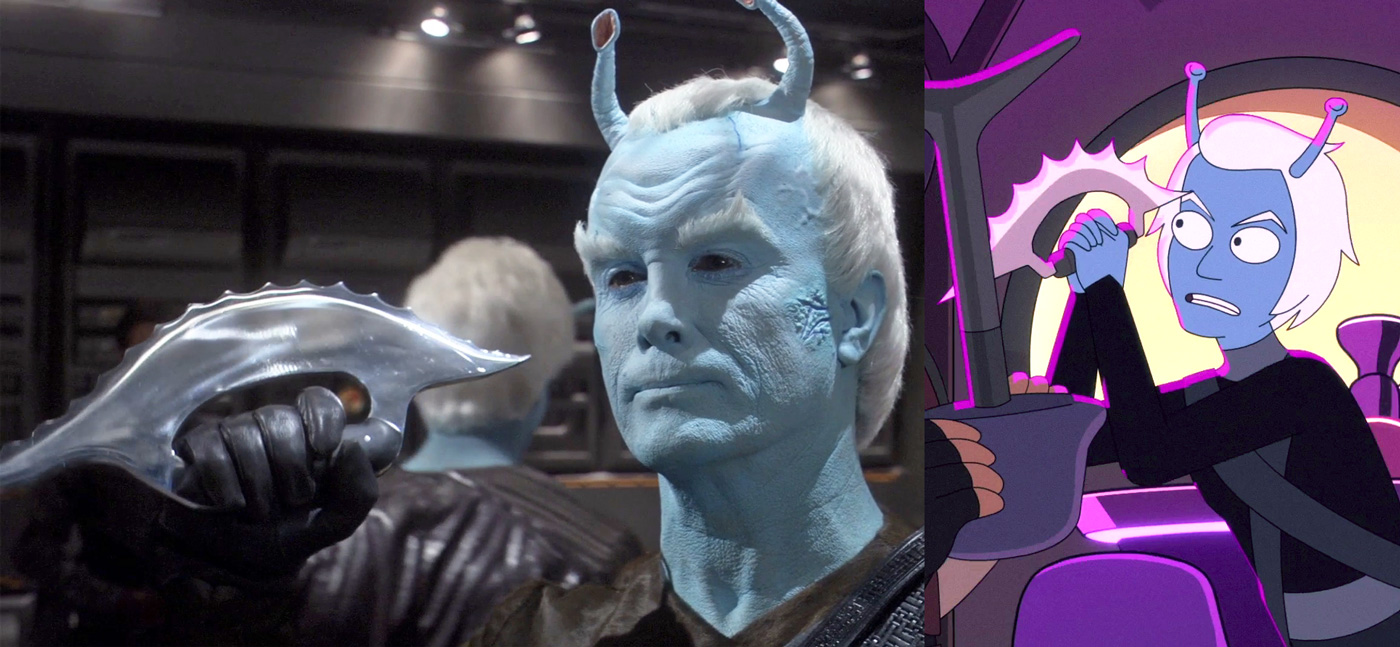
That kind of thing — we’re really trying to follow the rules of any other Star Trek show that would take place in 2380, but also translate them, with our artists, into the animated version that we’re doing. You’ll see across Season 1 — this always happens in animated shows — we get better and better at it as each episode goes on, because we’re building what we know of as ‘our version’ of that TNG era… just in a hand drawn way.
TREKCORE: And what sort of timeline does the development of each episode follow? Obviously right now, pandemic life has turned every production schedule upside down, but when things are ‘normal,’ what’s it take to bring an episode of Lower Decks from story idea to screen?
MCMAHAN: Well, let’s say the show’s been picked up and you’re ready to go – maybe you have a pilot written, maybe you don’t – but it’s usually about 13 months from ‘zero’ to having a finished episode.
That can give or take, you know, a little bit more or less, depending on how long the episodes are, how complicated they are… or if there’s a global pandemic keeping everybody working remotely so you can’t just pop into somebody’s office and be like, “Hey, does this bat’leth look right?”
Instead you have to schedule a Zoom call, or shoot an email off and wait! But the process, in a nutshell, is: you write it, you have a lot of conversations about the script, and then you record it with the actors and they give their shine to it. Then we get, like, an old-timey radio play version of the episode, that gets distributed to the [storyboard] artists, who start putting together sequences.
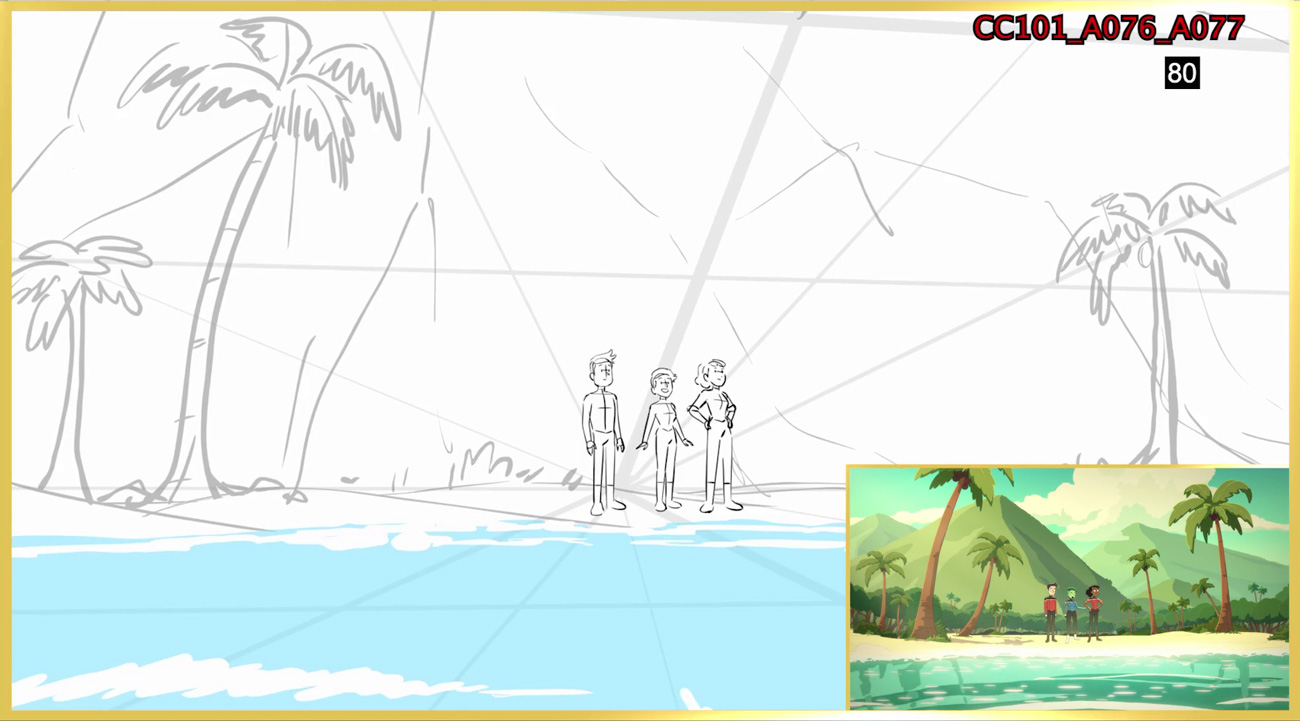
And then at the same time, once you know how many things are supposed to be in each episode — and depending on what planet you’re going to — you’re working with the character designers to design new aliens, or figure out what our Klingons look like, or what our Andorians look like.
Then you’re working with the background artists and the color artists, and everybody’s kind of working hand-in-hand to make sure that it’s all filtering through me — because there has to be one person saying ‘yes’ or ‘no’ at the very end of the day.
That’s kind of like what I really geek out over — all these different artists who are all loving it… and then the more we do, the more they understand what the show should look like.
TREKCORE: That also means you get to see your name in that classic blue Next Generation font in the credits every week, which has to be pretty mind-blowing.
MCMAHAN: Oh, it’s the best. The best! Even while making the show, I was like, “Are they gonna let me do that?”
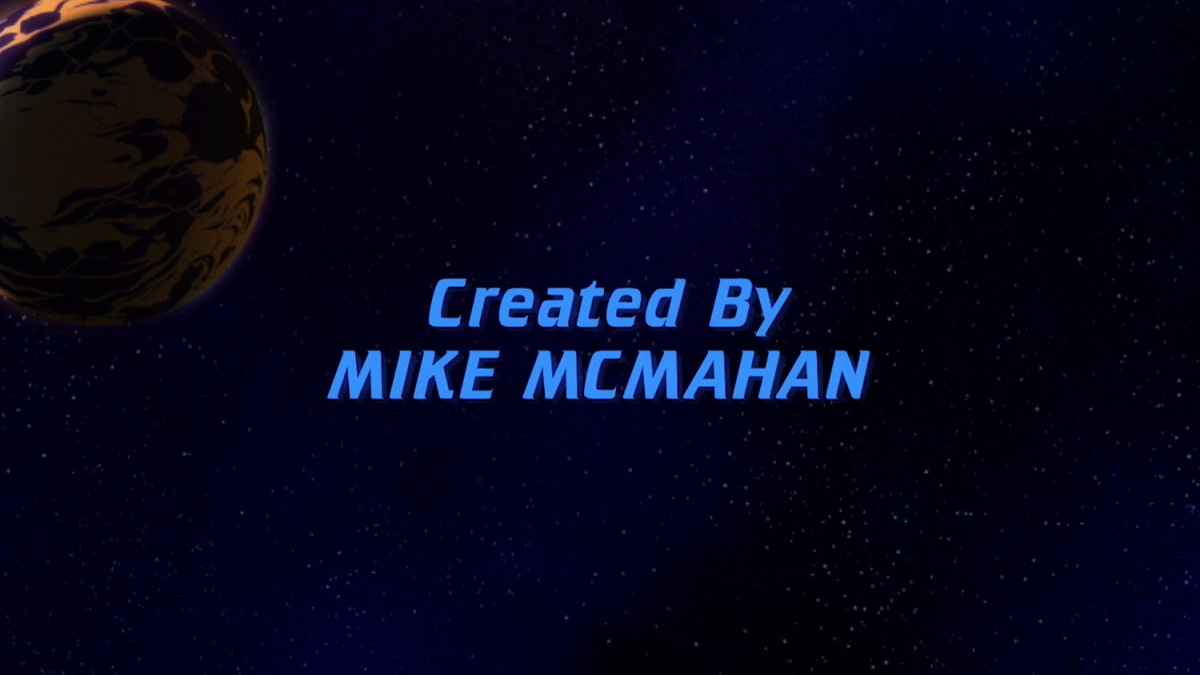
TREKCORE: The last fifteen years – between the Kelvin Timeline movies, Discovery, and Captain Pike – have been a lot of Original Series-era stuff, but now with Picard and Lower Decks, 2020 has become the year of Next Generation nostalgia.
What is it about that TNG era that makes such a great time period for Star Trek storytelling, instead of centering Lower Decks at some new point in the Trek timeline?
MCMAHAN: Well, I think the TNG era did a really amazing job of showing people in charge who were responsible, and ethical, and really liked to talk stuff out, and really make sure that the right thing was being done… and I think right now, maybe, the people in charge [of the world] don’t always seem like that they are guided by, you know, being bastions of truth and honesty.
Like, I think that ‘Truth-with-a-capital-T’ is kind of getting banged around right now a little bit. So there is this baseline of Starfleet, and these morality stories in all the Star Trek shows — but for me growing up, especially in TNG — I like playing in a world where there are rules and there are good people doing good things.
Then, you want to write characters that are also good people trying to do good things, but who have personality. They don’t have to be like existing cast of a Star Trek show to be a good person who wants to do better, and who wants to explore.
There’s room in the TNG galaxy for the characters we’ve made for Lower Decks.
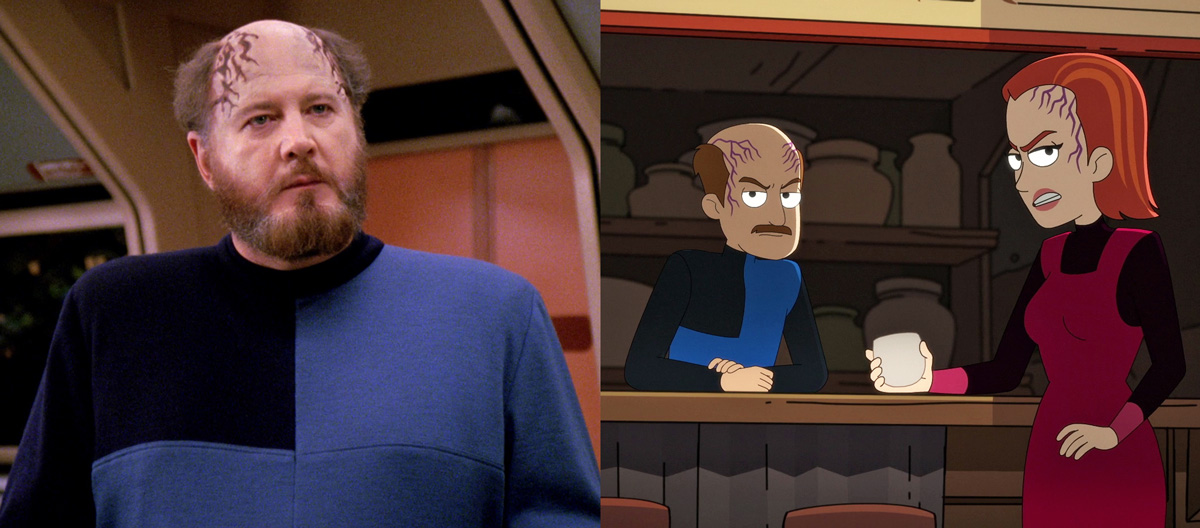
TREKCORE: Now that you’re set in that part of the franchise timeline, how do you choose between fitting in a familiar alien, introducing a new technology, or calling back to that one weird creature from a 1993 episode of Next Gen when you’re breaking stories?
‘Canon’ can be a dreaded word sometimes for the Star Trek creative teams — it’s obviously something you’re embracing closely in Lower Decks — but where you strike the balance between a making a reference to something known, and creating something new for your stories?
MCMAHAN: I mean, nobody on our show goes into it being like, “Ooh, we’re making an Easter egg show!” Like, every single person is there to tell emotional stories about Mariner, Boimler, Rutherford, and Tendi.
For us, all of the Easter eggs and all of the little references and stuff that are in the episodes aren’t there for people to pick through – they’re really there to create a rich, vibrant, fun expression of the world of Star Trek in that era, and incorporating elements of other areas.
Because we’re such a different show, and we have such a different tone from all other Star Trek shows, it just brings us a lot of joy to bring in all that Starfleet stuff and to bring in all the alien stuff, and to honor the other shows that already existed.
That fine line is, you know, we’ve had to pull stuff out, like when an artist loves something from the Original Series and it gets into the show and it’s like, “Ooh, actually, that alien isn’t actually known by these people, “ or, “There would be no reason for that alien to be in this sector during this time period,” that kind of thing.
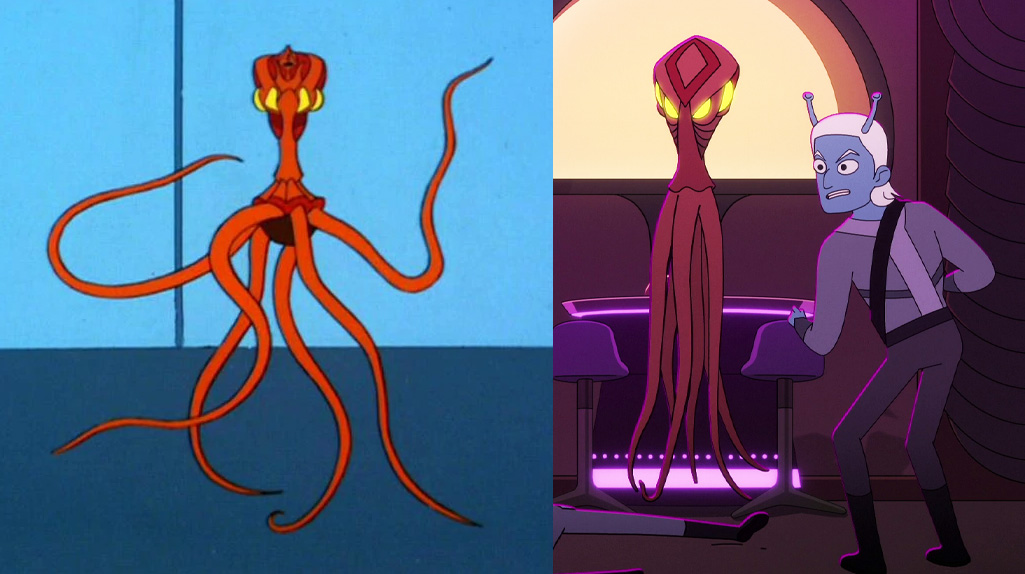
So if it’s making us ask more questions than providing answers, we’ll pull it out — but at the same time, the way I like to make animated shows? I’m a big re-watcher. I like to put stuff on and find new things every time I watch – I’m the kind of guy who just loved Where’s Waldo? books growing up.
I like to make TV shows feel like Where’s Waldo? books, so that you watched it four times because you love the characters, because you love Tawny Newsome and Jack Quaid’s performances, and Noel Wells’ and Eugene Cordero’s… but then you watch a fifth again and you say, “Wait a minute, look at that! I never noticed that!”
We want it to be like a visual feast, and be having fun, but if you don’t know any of those references, it doesn’t diminish the show – and if you know every one of them it’s going to be like sensory overload! But it should still feel like we’re doing it carefully.
We’re not just like spraying it all over the show and then being like, “Good luck! Have fun hunting it all down!”
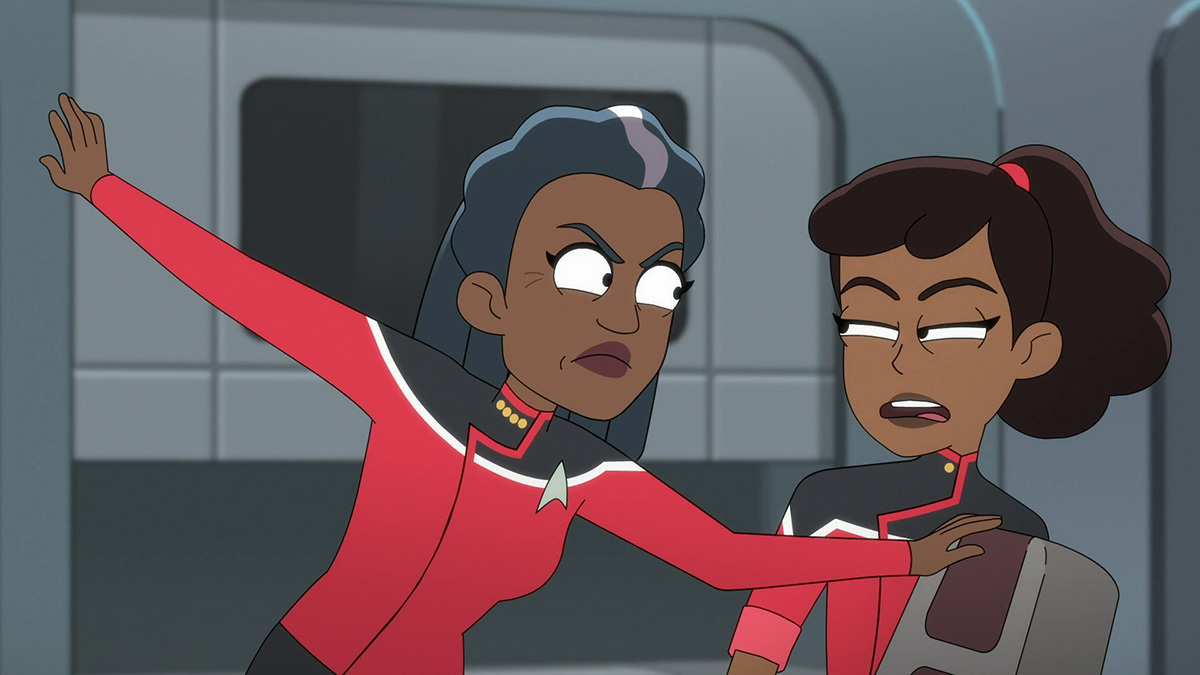
TREKCORE: Tell me about the reveal in “Second Contact” that Mariner is actually Captain Freeman’s daughter. How will that surprise play out as the season continues?
MCMAHAN: We’ve seen a lot of parents in Star Trek with their kids before, but we’ve never seen one of those relationships where both of them are constantly at odds with each other.
For me, growing up, as many times as we had where our whole family was getting along, we also got in big arguments — because we love each other. That’s just how our family expressed what a long car ride should be like, you know?
I knew that I really wanted to write Mariner as a new type of Starfleet character, who is great at everything, but doesn’t have it all figured out yet – like, hasn’t figured out her place in Starfleet. And I knew that I wanted her to have been on other ships before the Cerritos, and that this assignment was kind of her last hurrah — her last chance of being a Starfleet officer.
Making her mom the captain — and making nobody else on the ship knew –provided very rare they’ve-never-done-this-on-Star-Trek-before character elements that got me really excited to find out what that might look like in a Star Trek show.
So it really was just a mixture of all those things that allowed me to write Mariner in a way that she could behave a little differently than other Starfleet characters, and allow me to write Captain Freeman in a way to allow her to behave a little bit differently as well, and it didn’t really break the rules of Starfleet, because they have this kind of secret between them.
That’s something we explore across the whole season in a way that I had a lot of fun with, and you’ll also see it reverberate into Season 2 as well.
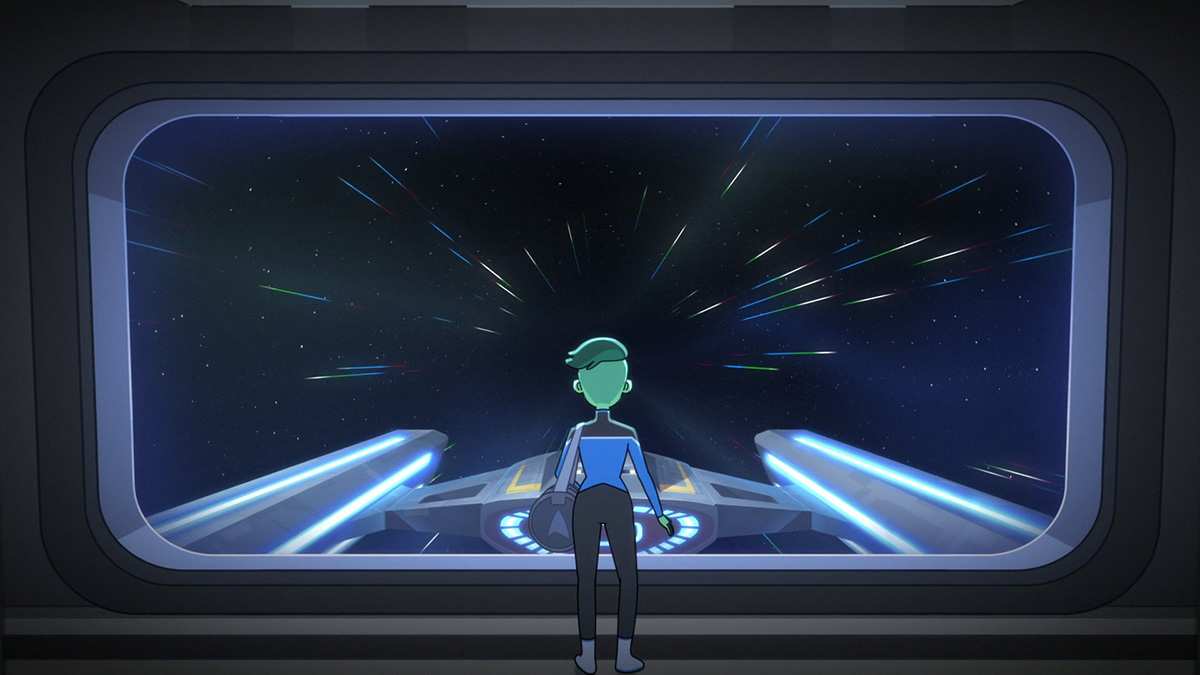
TREKCORE: Before we wrap up here, Mike, what are your hopes for the series – and is there anything else you’d like to share with Star Trek fans who will be watching?
MCMAHAN: I’d say that I’m really excited for people to do the series. I know it’s tempting to judge the entire series based on each episode — but every episode is different. Every episode, has, you know, a story of the week with light serialization across the whole season.
I would say, keep watching the show if you’re finding things you like. If you’re holding us to task, if there are things that you want to be better, keep watching — because I think you’ll be really surprised at how many different, amazing, and fun kind of stories are coming across the first season.
![]()
We’ll have our review of Lower Decks’ second episode, “Envoys,” up on the site Sunday — just a little bit of real life getting in the way of our publication schedule this week.
In the meantime, let us know what you think about Mike McMahan’s insights into the creative processes behind Lower Decks in the comments below!
* * * *
Star Trek: Lower Decks returns this Thursday with “Temporal Edict” on CBS All Access in the United States, and CTV Sci Fi Channel in Canada. International availability for the series has not yet been announced.
